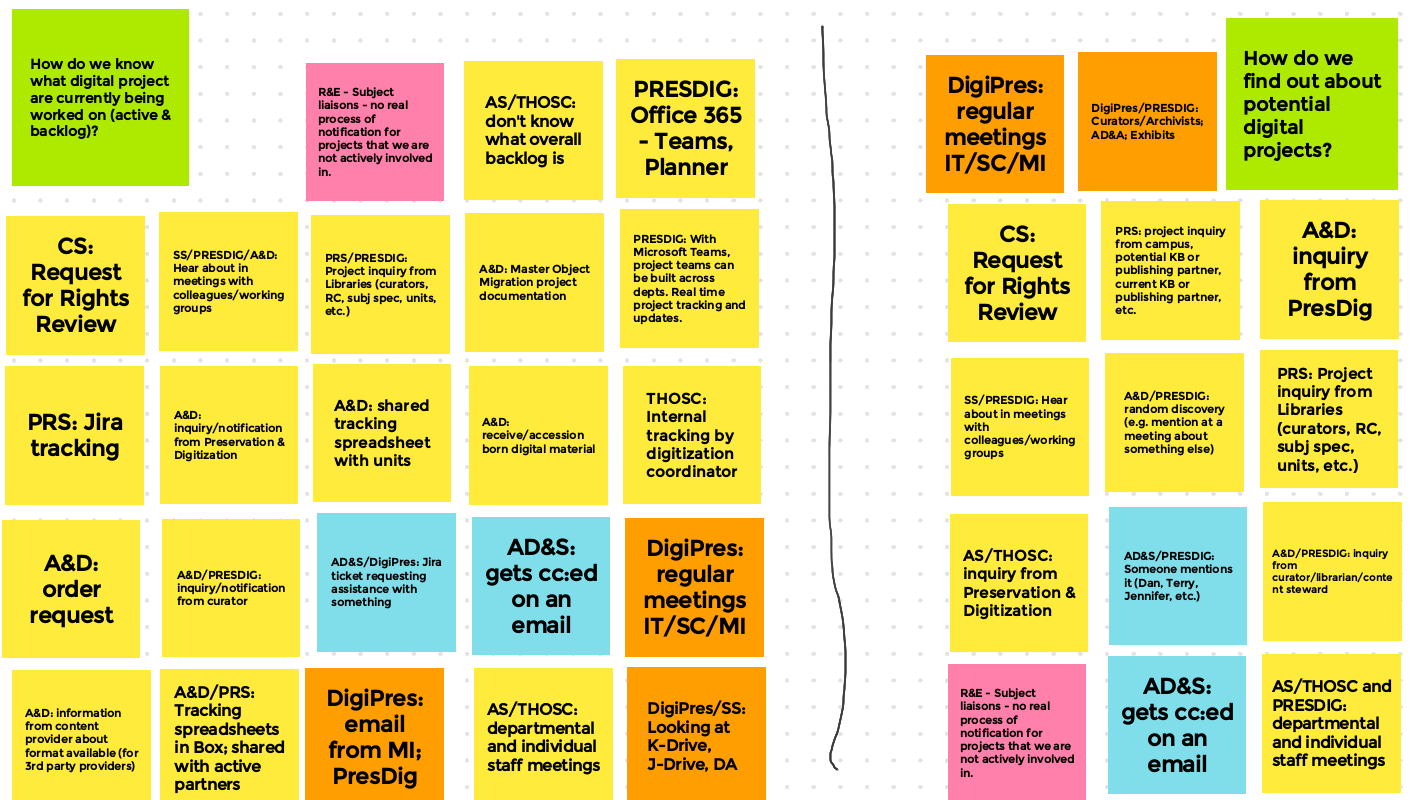Digital Projects Planning, Priorities and Transparency
Link to this page: go.osu.edu/DPA-DPPPT
Introduction
The purpose of this project is to determine a process or set of processes that enables the University Libraries to effectively plan and prioritize digital projects, while transparently communicating and making that information available to the Libraries and its partners. It is meant to be able to answers the following questions:
- How do we know what digital project are currently being worked on?
- How do we find out about potential digital projects?
- How do we prioritize digital projects?
- How do we prioritize digital ingest?
- How do we communicate to the organization these priorities & processes?
Based upon the information addressing these and other inquiries generate, we will develop a more transparent and equitable set of processes for managing our digital projects and necessary resources.
Digital projects include:
- Digitization for access
- Digitization for preservation and access
- Born digital acquisitions
- Exhibits
- Digital preservation
Initial Brainstorming
The DP&A work group conducted a brainstorming session at our July 28, 2020 meeting via Google JamBoard. We addressed the five questions outlined above in the Introduction. Below are images from the session (or you can download a PDF version). This raw data dump will be refined for our next discussion on August 25, 2020.
Abbreviations Key:
- A&D: Arrangement & Description
- AD&S: Application Development & Support
- AS: Area Studies
- CS: Copyright Services
- DigiPres: Digital Preservation
- MI: Metadata Initiatives
- PRESDIG: Preservation & Digitization
- PRS: Publishing and Repository Services
- R&E: Research & Education
- SS: Scholarly Sharing
- THOSC: Thompson Special Collections
Initial Gap Analysis
October 15, 2020: A key observation was made during a brainstorming session for digital projects planning, priorities and transparency by Beth that resonated with many of us:
“It seems that individual units treat projects as internal projects rather than Libraries projects; hence, project management seems to be isolated to the unit without a holistic picture of overall workflow.”
This manifests itself among a variety of the identified gaps:
- Lack of digital content policy:
- Clarify the selection criteria for long-term preservation and stewardship versus transactional work that need to be discarded
- Is it in alignment with existing collection strategies?
- Is it in alignment with organizational goals/strategies?
- Investigate peer institution decision-making criteria?
- Lack of overall priority management:
- What drives the priority decisions?
- Who decides on the priority? (A committee once had the authority)
- What is an appropriate governance model?
- Lack of process controls (essential for a sustainable system)
- Develop rubric for life-cycle preservation decision-making
- Develop SOP for patron requests
- Lack of consolidated project documentation and designated repository for it
- Loss of transfer of knowledge resulting from staff turnover.
Based upon this analysis the DP&A needs to:
- Identify what are our deepest priorities to set up task groups around; i.e. what are the one or two things over winter to get action going on?
- Approach this activity in a mode of incremental or iterative change. It doesn’t have to be perfect out-of-the-box.
- Who should be invited to the task group(s)?
- What would a timeline for a first iteration look like?
- What can be an exemplar?
If you have a disability and experience difficulty accessing this content, please contact LIB-a11y@osu.edu.


